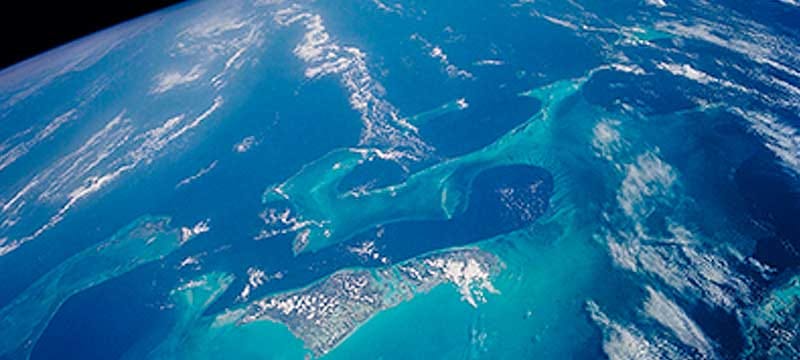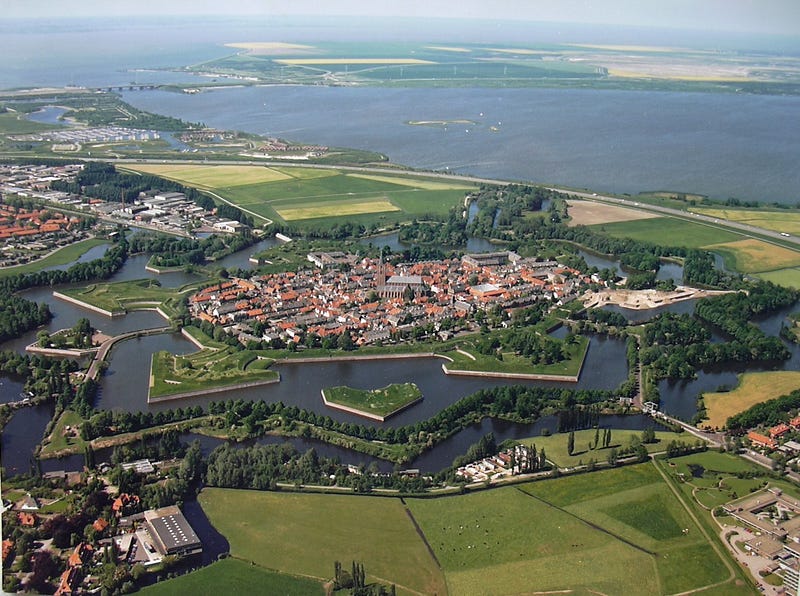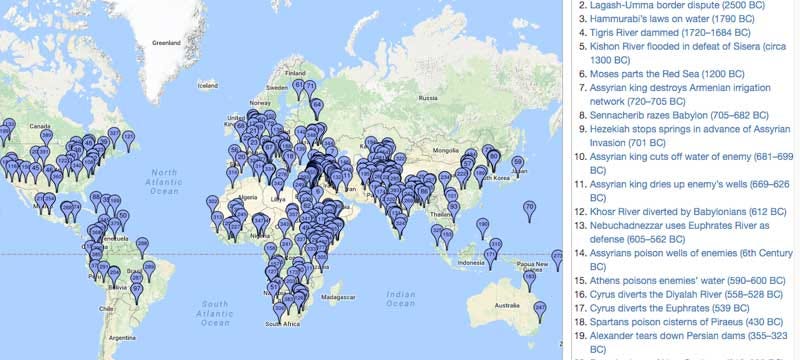Water and Conflict
Published on by Peter Neill, Director, World Ocean Observatory in Social
Water has long been the focus of conflict. We have been fighting wars over the most valuable and precious resource on the planet since thousands of years B.C.
by Peter Neill, Director, World Ocean Observatory
We speak today of water wars as if they are a new development in history. But as the most valuable natural resource on earth, water has long been the focus of conflict over territory, supply, and equitable distribution for all its essential purpose as source of sustainability and survival.
The Pacific Institute, based in California, is a well-spring of information about water policy and water advocacy. A visit to their website, worldwater.org, and a like on their Facebook page provides an always changing and provocative source of information on the world’s freshwater resources.

credit: institute of physics (iop.org)
A most interesting feature is a chronology of water conflict with entries categorized by types to include:
Control of Water Resources: where water supplies or access to water is at the root of tensions.
Military Tool : where water resources, or water systems themselves, are used by a nation or state as a weapon during a military action.
Political Tool : where water resources, or water systems themselves, are used by a nation, state, or non-state actor for a political goal.
Terrorism : where water resources, or water systems, are either targets or tools of violence or coercion by non-state actors.
Military Target : where water resource systems are targets of military actions by nations or states.
Development Disputes : where water resources or water systems are a major source of contention and dispute in the context of economic and social development.
To give you some idea of the variety and historical extent of this history, let me provide a few quick, evocative examples quoted from the list:
3000 BC : Ancient Sumerian legend recounts the deeds of the deity Ea, who punished humanity for its sins by inflicting the Earth with a six-day storm. The Sumerian myth parallels the Biblical account of Noah and the deluge, although some details differ.
612 BC: A coalition of Egyptian, Median (Persian), and Babylonian forces attacks and destroys Ninevah, the capital of Assyria. Nebuchadnezzar’s father, Nebopolassar, leads the Babylonians. The converging armies divert the Khosr River to create a flood, which allows them to elevate their siege engines on rafts.
537 AD: As the Roman Empire begins to decline, the Goths besiege Rome and cut almost all of the aqueducts leading into the city. In 537 AD this siege was successful. The only aqueduct that continues to function is the Aqua Virgo, which runs almost entirely underground.
1573 AD: At the beginning of the eighty years war against Spain, the Dutch flood the land to break the siege of Spanish troops on the town Alkmaar. The same defense is used to protect Leiden in 1574. This strategy becomes known as the Dutch Water Line and is used frequently for defense in later years.

dutch water line — a frequent defense involving the flooding of lands in the netherlands.
aerial view of the fortified town of naarden. credit: wikipedia
1898 AD : Military conflict nearly ensues between Britain and France in 1898 when a French expedition attempted to gain control of the headwaters of the White Nile. While the parties ultimately negotiates a settlement of the dispute, the incident has been characterized as having “dramatized Egypt’s vulnerable dependence on the Nile, and fixed the attitude of Egyptian policy-makers ever since.”

water conflict chronology | pacific institute
And now to jump to almost yesterday:
2017 AD : In response to the advance of the Syrian Arab Army, The Islamic State (ISIS) floods villages they control in the Deir Hafer Plain of east Aleppo by pumping water from Lake Assad into the Al-Jar channel.
The list goes on and on, can be searched by region and conflict type, as well as visualized through an interactive map that shows the extraordinary global distribution of water conflict over time. This history would not exist but for the indisputable value of water — its power, urgency, and requirement. All else pales — civilizing ideas, religious concepts, political boundaries, and questions of justice — when there is no resolution for water, when there is no water to drink.
Water and Conflict first appeared as a 5-minute audio episode on World Ocean Radio. Host Peter Neill is founder and director of the World Ocean Observatory, a web-based place of exchange for information and educational services about the health of the world ocean. Online at worldoceanobservatory.org.
Attached link
https://medium.com/@TheW2O/water-and-conflict-7f0970ba4d06Media
Taxonomy
- Governance
- Water Cooperation & Conflict
- Environment
- Human Rights
- Water Supply
- Water Management
- Water Governance
- International Cooperation
2 Comments
-
Excellent piece. In Somaliland where water is scarcity, water wars are the norm.
-
Sir, Excellent content on Water wars